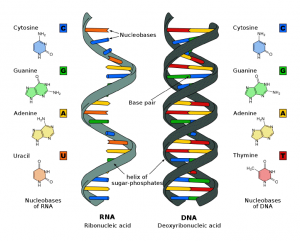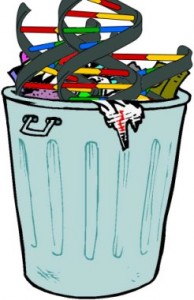In the January 23rd edition of Nature a team of scientists report using DNA to store poems, a picture and a recorded speech. From Science News:
Led by Nick Goldman, researchers from the European Bioinformatics Institute in England began by converting the five files into bits (technically, “trits” — they used a triplet code comprising zero, one and two). Then they translated that code into one made of As, Cs, Gs and Ts, the “letters” of DNA. So TAGAT replaces the “T” that begins line two of Shakespeare’s sonnet 18: “Thou art more lovely and more temperate.” The team also incorporated a way to index the data — sort of a DNA version of the Dewey Decimal System — and an error correction code to keep the data clean.
Then the researchers sent their code to the instrumentation company Agilent Technologies in Santa Clara, Calif. There scientists read the code and used it to build millions upon millions of DNA molecules, which they sent back to the researchers via FedEx in a test tube inside a cardboard box.
When the test tube, about the size of a pinkie finger, arrived, Goldman and his colleagues sequenced the DNA, the same way researchers read the DNA of organisms, reconstructing the original files. The translation from data to DNA and back was free of errors, says Goldman.
DNA storage offers the potential of holding vastly more data in a smaller amount of space. It might also potentially be cheaper as the cost of DNA synthesis and sequencing continues to become less costly.


